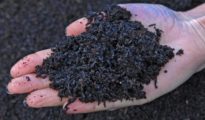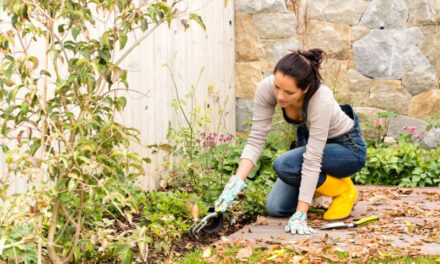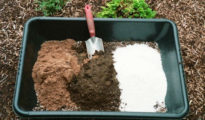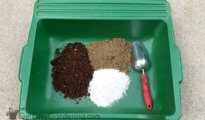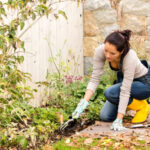If you're interested in starting your own vegetable garden, look no further than this vegetable gardening for beginners for guide! There is really nothing more satisfying than growing your own veggies and tasting fresh, crunchy veggies straight from your garden! In this guide, you'll get the basics of vegetable gardening for beginners which will help you start the most productive, delicious garden you'll ever have! With these basics, you'll be able to choose a grow site, learn a little about the right type of soil, and decide which veggies you should plant!
Vegetable Gardening for Beginners

#1. Pick the Right Location
Picking the perfect location for your vegetables is super important because it's the key to growing perfect veggies! Not so perfect location = not so perfect veggies!
- Plant in a Sunny Location: Most veggies will need at least 6 hours of sunlight per day, so choose a spot with lots of sun!
- Choose the Right Soil: Choose a good quality soil that's light and rich, and make sure to add some compost to it as well! Plants' roots will penetrate light, loamy soil easier and the nutrients from the compost will enrich your veggies!
- Choose a Stable Environment: Choose a spot that will be shielded from environmental causes, such as flooding, high winds, or dry soil.
#2. Choose a Plot Size
No matter how excited you may be about starting your new garden, it's always a good idea to start small and THEN expand. You never know what kind of problems you may come across which can overwhelm you and leave you with too much work!
- A good size beginner vegetable garden should be about 16×10 feet and will have beginner crops that are easy to grow. This way, you'll be successful right off the bat and not end up with hundreds of pounds of zucchini!
- A plot of this size can easily feed a family of four for an entire summer!
- Make your garden about 11 rows wide, with each row being 10 feet long. The rows should run north and south to take advantage of the sunlight.
- Make use of a raised bed or grow your fruits and vegetables in pots and containers. This makes everything easier from being able to control what type of soil you grow in, to preventing diseases and pests. Plants will always grow best when they're in a controlled environment, such as a garden bed.
- If you're growing plants in pots or containers, be sure to read the packet and follow spacing guidelines. Plants need room to grow, and not giving them enough space can cause growth stunts and invite diseases due to poor air circulation.
#3. Grow The Tastiest Vegetables
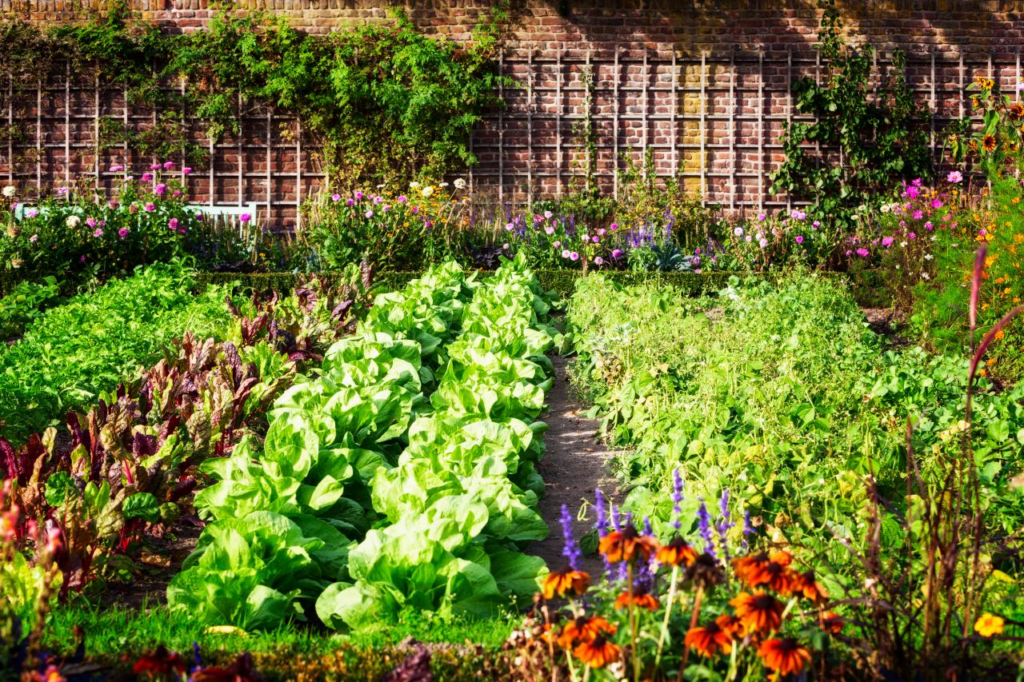
In order for your veggies to be super fresh and tasty, you'll need to choose the right seeds, space them accordingly, and care for them on a regular basis!
- Space Your Crops Properly: Pay special attention to the spacing guidelines on seed packets. Some vegetables need a ton of space, while others like to be close to one another. Not following this can lead to uneven growth.
- Use High Quality Seed: Since you're growing your own food, you may as well use the best seeds you can find, since cheap seeds can cause a lot of problems!
- Water Properly: Again, check the planting guidelines on your seed packets for proper watering. Some vegetables may need more water while others may need a lot less.
- Plant & Harvest at the Right Time: Every vegetable has its own planting date, growing season, and own harvest date. Follow the guidelines on the seed packets to see when each vegetable needs to be planted and harvested.
- Plant on Time: Depending on where you live, you should plant after the last frost date. This is true for MOST plants, but it's always best to do a little research or follow the instructions on the seed packet.
Suggested Plants for a Beginner Gardener
Below are some vegetables that are PERFECT for beginner gardeners as they don't require much care or expertise and they'll grow fast and easy. Click on each vegetable to see its growing guide and grow vegetables in your own garden. A salad will never taste so good once you've got a green thumb!
- Tomatoes
- Zucchini
- Peppers
- Cabbage
- Bush Beans
- Lettuce
- Beets
- Carrots
- Chard
- Radishes
- Marigolds (to discourage pests and add color to your garden!)
USDA Hardiness Zone
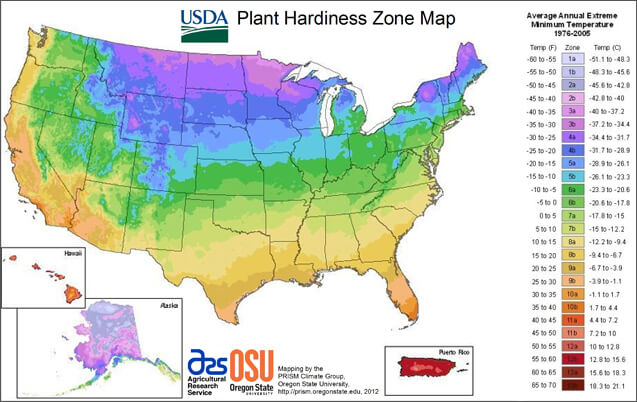
If you're new to gardening, you may have noticed that most articles talk about the “USDA zone” or “hardiness zone”. This refers to the area you live in and what you can plant there. Warmer climates, such as Florida, for example, will be able to grow different things than colder areas such as Alaska.
The USDA plant hardiness zone map is the standard by which gardeners can determine which plants are most likely to thrive in a specific location. The way the map works is like this: based on the average annual minimum winter temperature, divided into 10-degree F zones. This USDA zones map will help you determine which zone you're in, which will in turn help you determine which plants you can grow and when.


